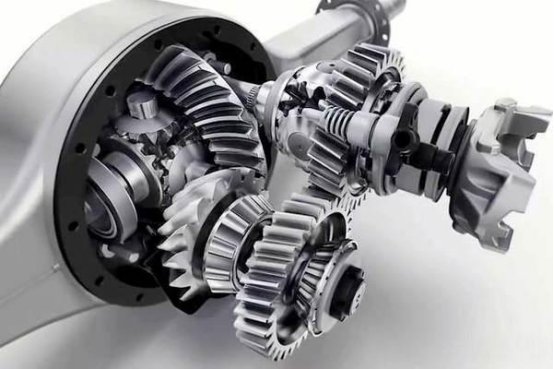The rear axle ratio is a very important configuration parameter on a truck. Most truck drivers know that, with the same engine and transmission, the larger the rear axle ratio, the slower the vehicle speed and the higher the fuel consumption, but the greater the power; the smaller the rear axle ratio, the faster the vehicle speed and the lower the fuel consumption, but the less power.

▎Rear axle ratio: Gear ratio of the main reducer of the drive axle
What we usually see as the rear axle is just a single axle with a bulge in the middle. Inside this bulge are the differential, the final drive assembly, and the top sections of the half-shafts on both sides.
The rear axle's gear ratios are related to these gears. The power output from the engine and transmission acts on the drive shaft. The rotation of the drive shaft inputs power to the main reduction gear, which in turn drives the main reduction gear, and finally the half-shafts.
Generally, the rear axle ratio is the gear ratio of the final drive in a car's drive axle, equal to the ratio of the angular velocity of the drive shaft to the angular velocity of the axle half-shaft. In practice, it's the number of teeth on the driven gear of the final drive divided by the number of teeth on the driving gear.
For example, if the driven gear has 43 teeth and the driving gear has 16 teeth, then 43 ÷ 16 ≈ 2.688, and the rear axle ratio is 2.688.
To simplify, imagine the drive shaft rotating N revolutions, causing the half-shaft to rotate one revolution. That N is the rear axle ratio.
For example, a 2.688 gear ratio means the driveshaft rotates 2.688 times to drive the half-shaft to rotate 1 time;
a 4.875 gear ratio means the driveshaft rotates 4.875 times to drive the half-shaft to rotate 1 time.
This calculation method is used for most commonly used single-stage reduction axles. However, there is also a type of wheel-side reduction axle commonly used in trucks, such as dump trucks and construction vehicles.

▎Speed Reduction and Torque Increase: Wheel-Side Reducer Also Included
The main reducer of the wheel-side reduction axle is smaller than that of a single-stage reduction axle of the same class, so the rear axle has better passability. There is also a set of reducers at the wheel side to achieve better speed reduction and torque increase, making the truck's wheel drive force stronger.

Generally, wheel-end reduction axles have speed ratios of 5.0 or 6.0 and above. This means the drive shaft rotates 5-6 times for the wheel to rotate only once, allowing for a huge torque output to the drive wheels. This is why vehicles with wheel-end reduction axles have strong driving force.
In summary, the rear axle speed ratio is simply the ratio of the drive shaft speed to the rear axle half-shaft speed. With the same engine speed and the same gearbox gear and speed ratio, a smaller rear axle speed ratio results in a faster vehicle speed, while a larger ratio results in a slower vehicle speed but greater driving force.
Without a rear axle reducer to reduce speed and increase torque, the engine's output speed must be converted into torque through the gearbox, which would require a very large gearbox to achieve the driving force of a typical truck.






